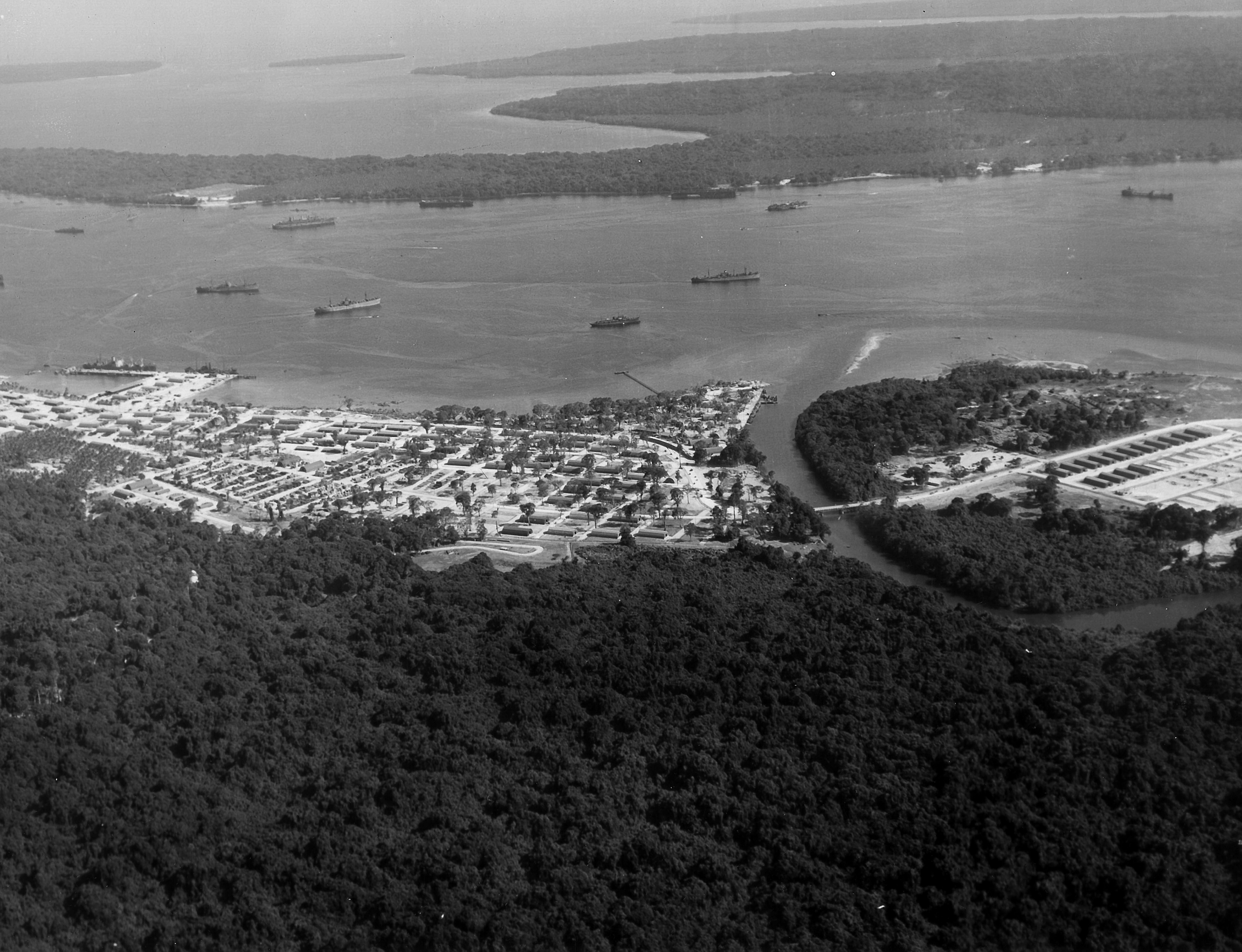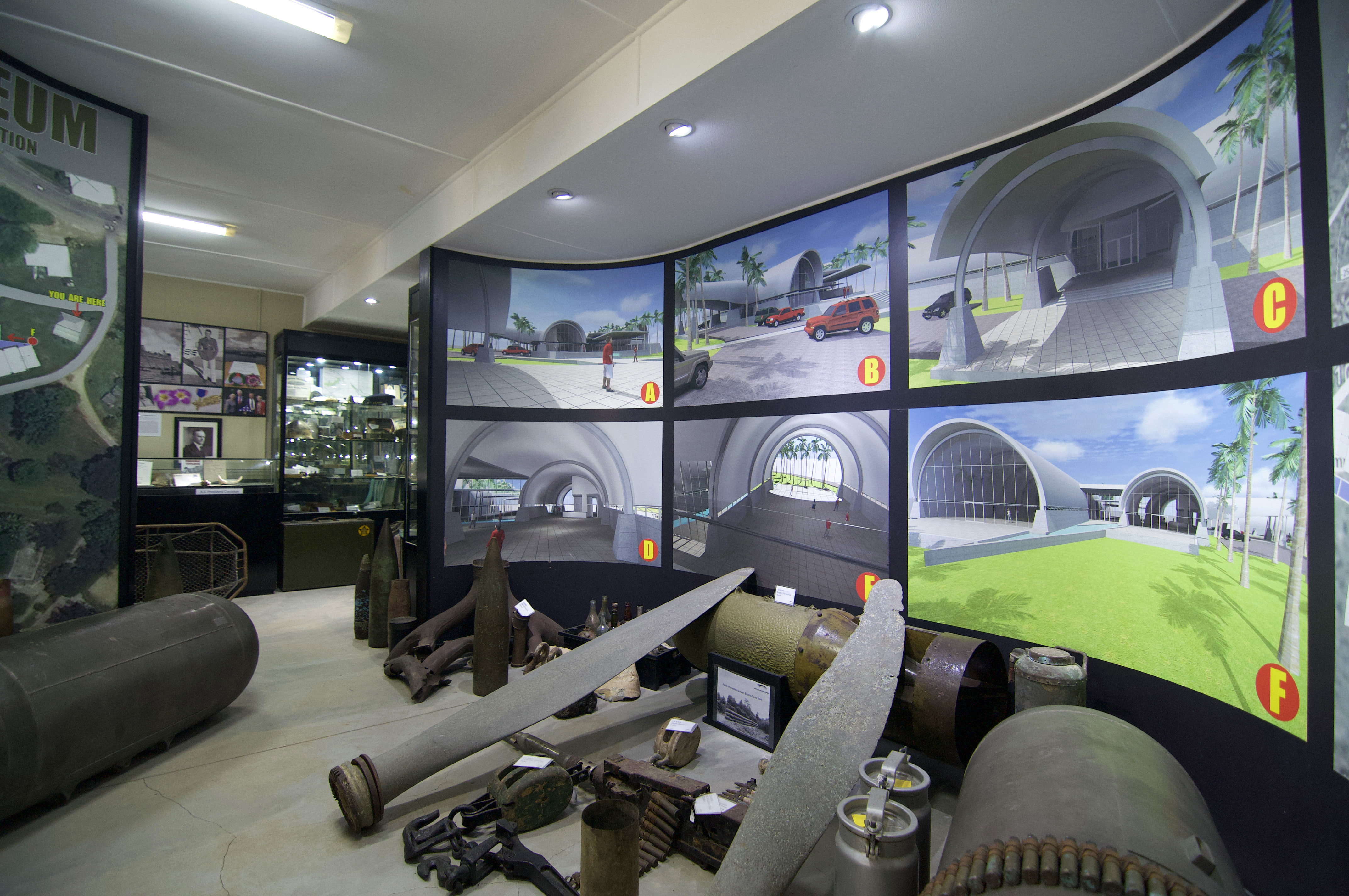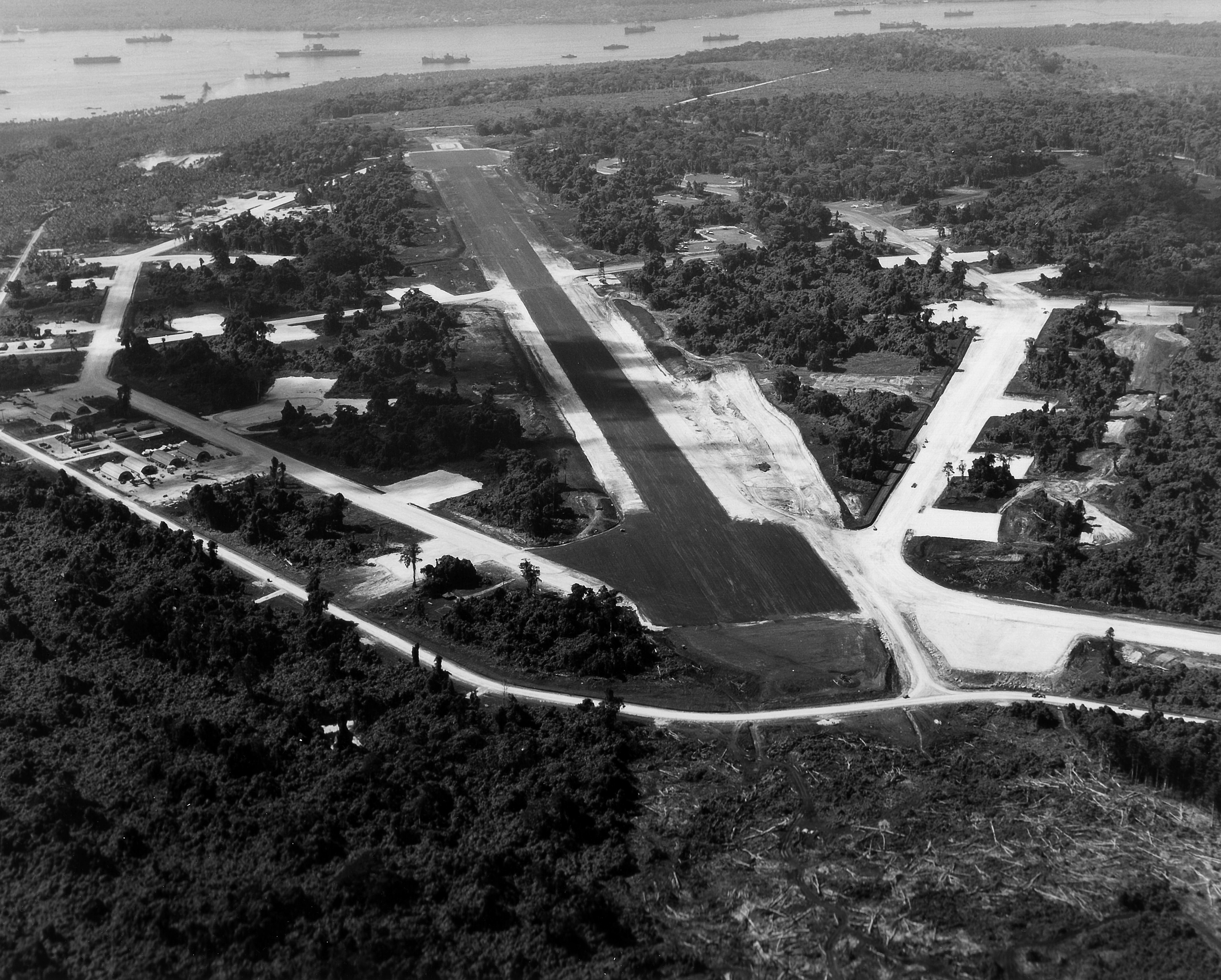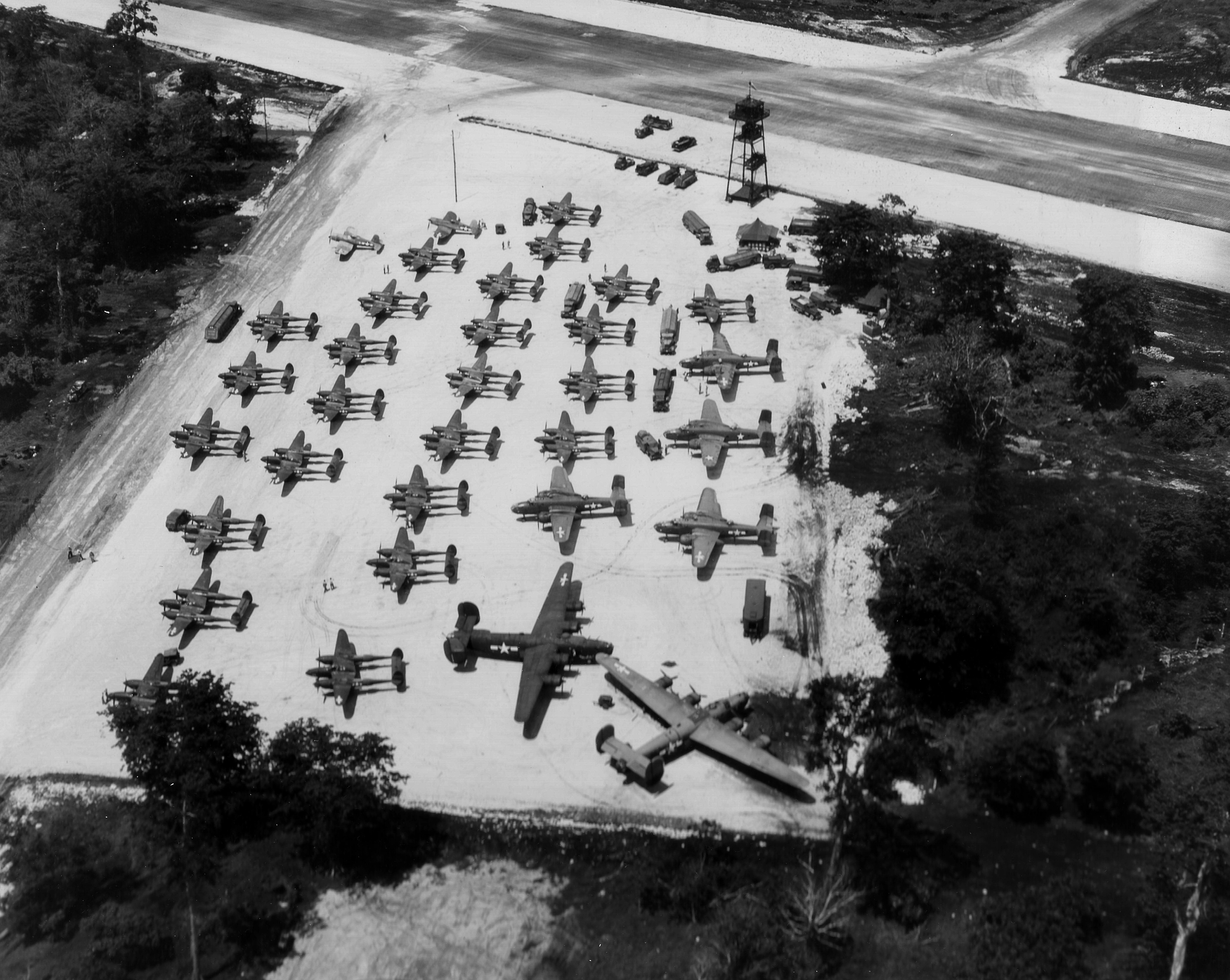In 1942 construction of Base Button (as it was code-named) commenced on an island named Espiritu Santo—known colloquially as simply, Santo—one of a group of 83 or so islands that during World War II were collectively known as the New Hebrides. Situated north of New Caledonia and west of Fiji in the South Pacific, it wasn’t until independence in 1980 that the island archipelago gained independence from the French and British Condominium and became known as Vanuatu.
The main town on Santo—the largest island in Vanuatu—is Luganville, home to the South Pacific World War II Museum. Kentucky-based writer and military history blogger Tambrie Johnson recently spoke with Bradley Wood and James Carter, the Museum’s chairman and project manager, respectively, about the organization’s history, collection and future plans.
Why was Luganville chosen as the site for the Museum?
When the project was in its infancy, the governing board knew we would need a large piece of land on which to site the planned museum. The Vanuatu government was keen to get behind the project and grant us the necessary land—we just had to find somewhere appropriate.
Thankfully, land was available that was originally occupied during World War II by the U.S. Navy’s Motor Torpedo Squadron 2. Situated on the banks of the Sarakata River where the PT boats would tie up, the site today still features the concrete slabs on which Quonset huts were constructed for maintenance and armament workshops. Being granted this land upon which to construct the Museum makes it all the more significant for us and provides a wonderful bond with the history of Luganville.
What is the significance of housing the museum on Santo?
During World War II, the New Hebrides islands of Efate and Espiritu Santo became home to large American military support bases. “Base Button”—as the installation on Santo was code-named—was by far the largest of the two. In fact, it became the largest U.S. base in the South Pacific.
To put it in context, the base covered an area of around 38 square miles. And the majority of that area began as either virgin jungle or coconut plantations run by French landowners. So, everything had to be built from scratch by U.S. Navy Seabee construction battalions. The Seabees constructed a large seaplane base and five hospitals, a couple of which accommodated more than 1,000 beds. Some of the largest floating dry docks in the world were assembled at Santo to service any ship in the U.S. Pacific fleet.
Base Button was essentially a massive maintenance and supply base, so warehousing was vital to keeping the fleet restocked, refueled and rearmed. Quonset huts became the order of the day and thousands of them were built in and around Santo. During September 1944 38,000 tons of naval ordnance were stored on Santo and nearby Aore Island. Not only that, Aore was also home to a huge tank farm that held almost 23 million gallons of fuel.
Santo was the staging point for many missions in the South Pacific. For instance, in 1942 Guadalcanal was of vital strategic importance to the Allies. However, at the time it was out of the range of U.S. Army Air Forces B-17 bombers. It was decided to build an airfield (the first of four), much further north on Santo that could accommodate the bombers. In just 20 days, a 6,000-foot-long runway was cut through the jungle allowing B-17s to land and refuel prior to their final push to Guadalcanal. It was an incredible achievement for a small group of men with very limited machinery and harsh tropical conditions living in tents.
Given Base Button’s importance to the Allied war effort in the Pacific Theatre, if you had to select somewhere in the South Pacific to construct a museum such as this, Santo deserves the recognition we’re hoping to bring to it through the Museum project.

How did the Museum come about?
Chairman and founder Bradley Wood really is the powerhouse behind the project. A builder by trade, he came to Vanuatu from Australia with his tool belt some 30 years ago, to help rebuild Port Vila following the devastation of a tropical cyclone. He stayed and eventually became a resident of Vanuatu. He is now a prominent businessman in Luganville and runs Santo Hardware, the largest business in town. He still spends a great deal of his time volunteering throughout Santo and assisting in times of need.
In 2012, lord mayor of Luganville Peter Sakita felt the town needed something that would drive tourism to Santo. It already had some of Vanuatu’s most beautiful beaches, but nothing that could be called a real “destination.” A meeting was arranged with Bradley, during which Peter suggested the town needed something to put it on the map. Bradley wholeheartedly agreed and immediately said the town needed a World War II museum that would capitalize on the history of the island.
Peter was sold on the idea and asked Bradley if he would be prepared to lead the team to make it happen. With a keen interest in World War II history and knowing Santo was sitting on a goldmine of wrecks, relics and an incredible history just waiting to be brought to life, you can guess Bradley’s response. He seized upon the idea with much gusto and an unbridled enthusiasm to see the project brought to fruition. He hasn’t slowed down since.
Tell us about the Museum’s collection.
We’re constantly adding to our collection as new items are discovered, donated, purchased, bequeathed or just acquired in some way. One of the biggest issues we face is “putting the cart before the horse.” What we mean by that is we need the museum to house our collection, but at the same time we need a collection to exhibit in the museum. There’s only so much we can acquire and maintain in climate-controlled conditions.
That said, we do have a marvelous collection of documents, personal items, ordnance, photographs and more, most of which can be viewed in our mini-museum on the site where our permanent museum will be constructed. All the items on display are from the Pacific Theatre during World War II, many of them from Santo itself.
As far as photographs go, our collection has been boosted through some wonderful donations from the families of service personnel who served on Santo during the war. Those collections will be named in honor of the individual who served on the island and we’ll rotate the collections through the museum over time.
We also have a Higgins landing craft in storage, awaiting restoration. That’s a big job, requiring some serious funding, so it’s on the backburner for the moment. However, we do have a recently restored Jeep that we’ve had on display on and off over the past six months and we have a “showroom condition” Jeep in the United States that we’ll bring over at some point in the future.
Also in storage is a P-38 Lightning wreck that was donated to the Museum by a local plantation owner. Despite very handsome offers from collectors wanting the wreck for parts, he donated it to us. Other items are currently in Australia and the United States and will be transported to the Museum when time, money and space permit.

Tell us about the people involved in the Museum project.
We have a wonderfully diverse group of people who share a passion for wanting to bring something truly unique to the island of Espiritu Santo. Expats from Australia, New Zealand, the United States and Japan (most of whom call Luganville home), as well as Ni-Vanuatu locals, came together with a desire to deliver positive outcomes for the people of Luganville, Espiritu Santo and Vanuatu as a whole. At the same time, they feel it’s important that we commemorate and remember those who served in the Pacific during World War II.
How will the Museum help to educate and encourage tourism to the Pacific islands?
The idea behind the Museum project is to create something iconic—something that will literally put Luganville on the map. Vanuatu is already known for its tropical island beaches and undeniably friendly locals, but imagine if it became known for having one of the “great museums of the world”?
A lofty ideal we know, but we believe we can create something truly breathtaking. Something that will have people wanting to come to the South Pacific, not just for the beaches, palm trees and exotic cocktails but to visit the “incredible museum” they’ve heard so much about. We know we can do it. We just need to find supporters and enthusiasts who share our vision.
As far as the location of the museum goes, Vanuatu is beautifully situated between New Caledonia and Fiji and is less than three hours by air from Australia and just over three from New Zealand. Having it so central within the South Pacific region makes it easily accessible by air from a number of countries.
Looking at education from an internal point of view, we actually see a part of our role as educators for the local community as well. We’re already hosting regular school groups through the mini museum. But we want to expand that to the greater community through history lectures and discovery tours.
Why is it important for people from around the world to visit the Museum?
Outside of history buffs, veteran’s families and World War II enthusiasts very little is known about Espiritu Santo’s role in the Pacific War. Therefore, it’s important for people to discover and appreciate this history, if not for themselves, to give thanks to those who so selflessly served their country to ensure freedom in the Pacific.
Many people believe that during World War II warships simply set sail from the larger ports such as Pearl Harbor, engaged the enemy over a period of weeks or months, then returned to port for resupply. While that is true to some degree, they probably have no idea there were large bases throughout the South Pacific keeping the ships armed, fueled and resupplied. What better way to experience what their ancestors went through than to visit the very island they called home?
Visiting Santo, you get the opportunity to being among it all, where all this incredible history took place. You get the chance to touch it, feel it, see it and at the same time experience a museum that in fact goes far beyond the walls we will be constructing in the not-too-distant future.

Describe the current Museum, and how you plan to expand for the future.
Our current Museum and Project Office have been a wonderful start for us, and help people get some idea as to where the project is headed. Through the incredible generosity of the board members and local businesses, we renovated and fitted out an abandoned building on the edge of our site on the Sarakata River. It opened in 2014 and has been our mini museum ever since.
The building itself has undergone quite a transformation and contains museum-quality display cabinets with integrated lighting, display areas for larger items, and offices, kitchen and storage. It’s a wonderful little museum that is now the number one tourist destination in Luganville.
Of course, ultimately our plan is to construct a much, much larger permanent museum on the site. However, latest estimates put the cost at U.S. $20 million—ironically, it would be the largest construction project on Vanuatu since Base Button during World War II.
So, in 2020 we looked at how the project might roll out, in phases, thereby substantially reducing our initial fundraising ambitions. Our plan is to build one wing of the permanent museum that incorporates a restored and repurposed original World War II Quonset hut in its design. At an estimated US $300,000, it’s certainly a more achievable target for us.
How can people help you reach your end goal?
The expressions of interest and donations by way of photographs and other items over the past five years has been wonderful for the Museum’s collection. And that is one of the ways people can continue to support the project.
We’re always extremely grateful for donations of not only photographs and documents but other memorabilia with some relevance to Santo or the Pacific War, and they would be gratefully received. Then again, something as simple as subscribing to our newsletter (which is totally free) shows a level of support for what we’re trying to achieve.
Of course, those donated items need a new home. Raising the money we need even for Phase 1, while not a huge sum, is not an easy task for a not-for-profit organisation, based on a tropical island in the South Pacific that many people have never heard of.
Grants that we’re eligible for are not easy to come by and Cyclone Harold and Covid-19 have certainly made things challenging for us. But we’re not giving up without a fight. We just have to appeal to similarly minded people who can appreciate the importance of this project and what it could mean to the people of Vanuatu. And if anyone knows how we can get in touch with Elon Musk, we’d really appreciate your help. We have an amazing project we’d love to run past him!
If you think you might be of assistance to us in any way, we’d love to hear from you. Please email Project Manager James Carter at james.carter@southpacificwwiimuseum.com.





